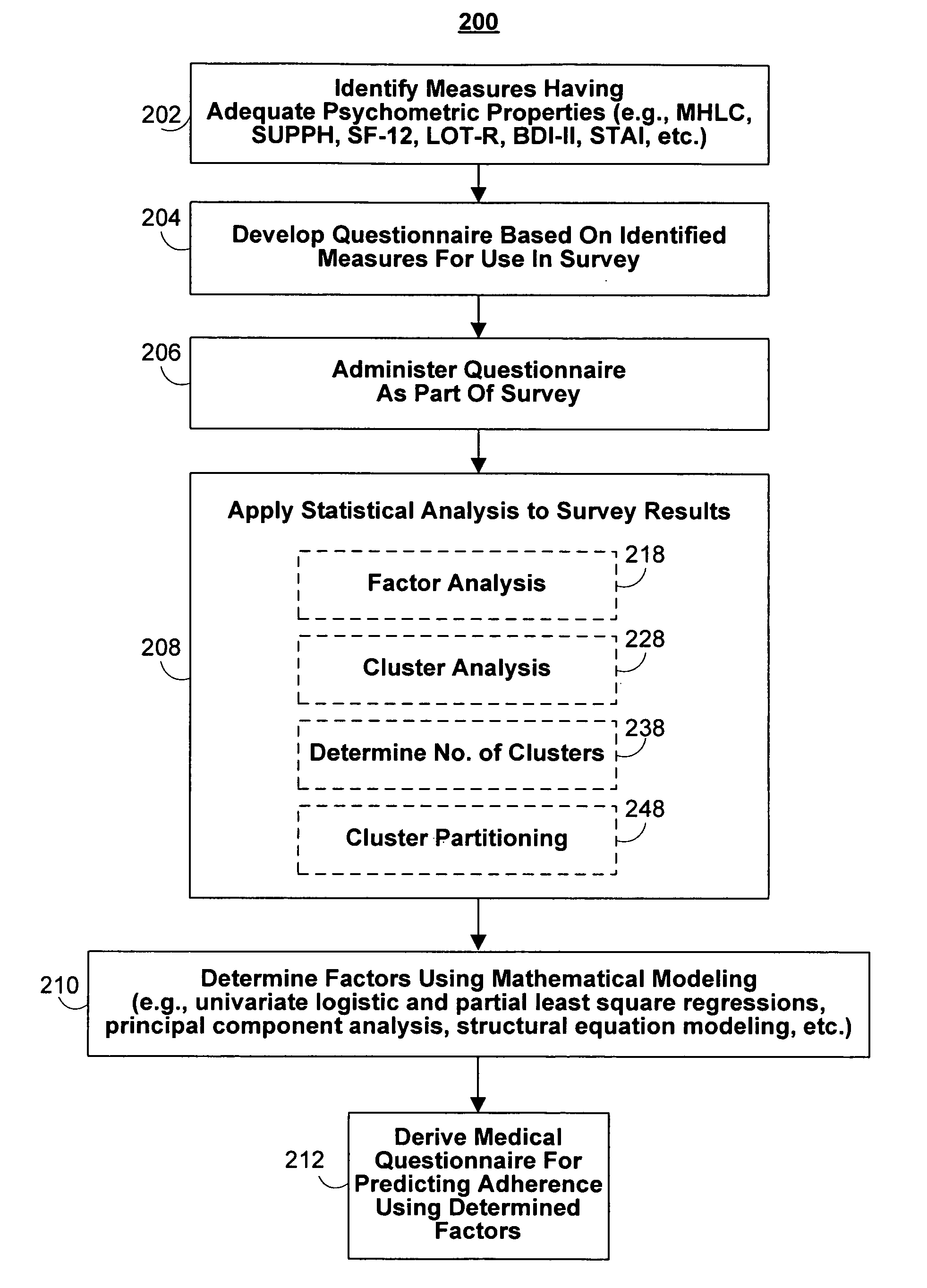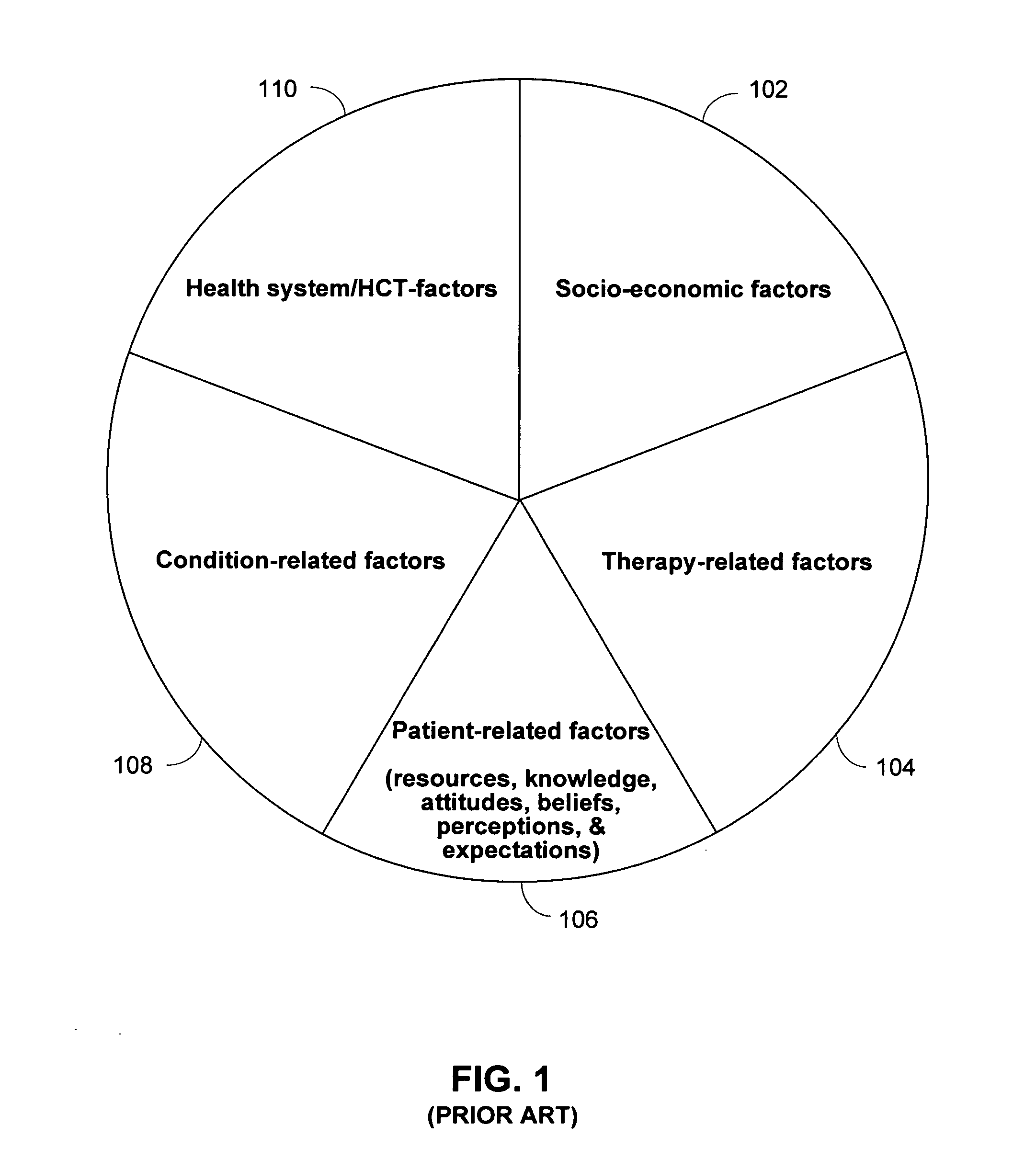Predicting patient compliance with medical treatment
a technology for patient compliance and treatment, applied in the field of predicting patient compliance with treatment, can solve problems such as serious consequences, affecting patient health, and achieve the effects of reducing the overall effectiveness of a patient's treatment, affecting the patient's health, and even death
- Summary
- Abstract
- Description
- Claims
- Application Information
AI Technical Summary
Benefits of technology
Problems solved by technology
Method used
Image
Examples
Embodiment Construction
[0019]The present invention is directed to methods for predicting a patient's adherence to a medical regimen and optimizing the patient's treatment based on the resulting prediction. To come up with a prediction for a particular patient's adherence to a prescribed medical regimen, a medical questionnaire may be administered to the patient and a prediction may be formed based on the patient's answers to the questions in the questionnaire. The questions in the questionnaire may be designed to address the factors that correlate to and affect patient adherence the most.
[0020]The factors influencing adherence can be complex and multifaceted. They may include socio-economic factors, beliefs and perceptions about benefits, risks and consequences, self-efficacy, anxiety, health locus of control, depression, optimism, distrust, openness to persuasion, and social influence. Because it is desirable to improve patient adherence to a given treatment, certain embodiments of the present invention ...
PUM
 Login to View More
Login to View More Abstract
Description
Claims
Application Information
 Login to View More
Login to View More - R&D
- Intellectual Property
- Life Sciences
- Materials
- Tech Scout
- Unparalleled Data Quality
- Higher Quality Content
- 60% Fewer Hallucinations
Browse by: Latest US Patents, China's latest patents, Technical Efficacy Thesaurus, Application Domain, Technology Topic, Popular Technical Reports.
© 2025 PatSnap. All rights reserved.Legal|Privacy policy|Modern Slavery Act Transparency Statement|Sitemap|About US| Contact US: help@patsnap.com



